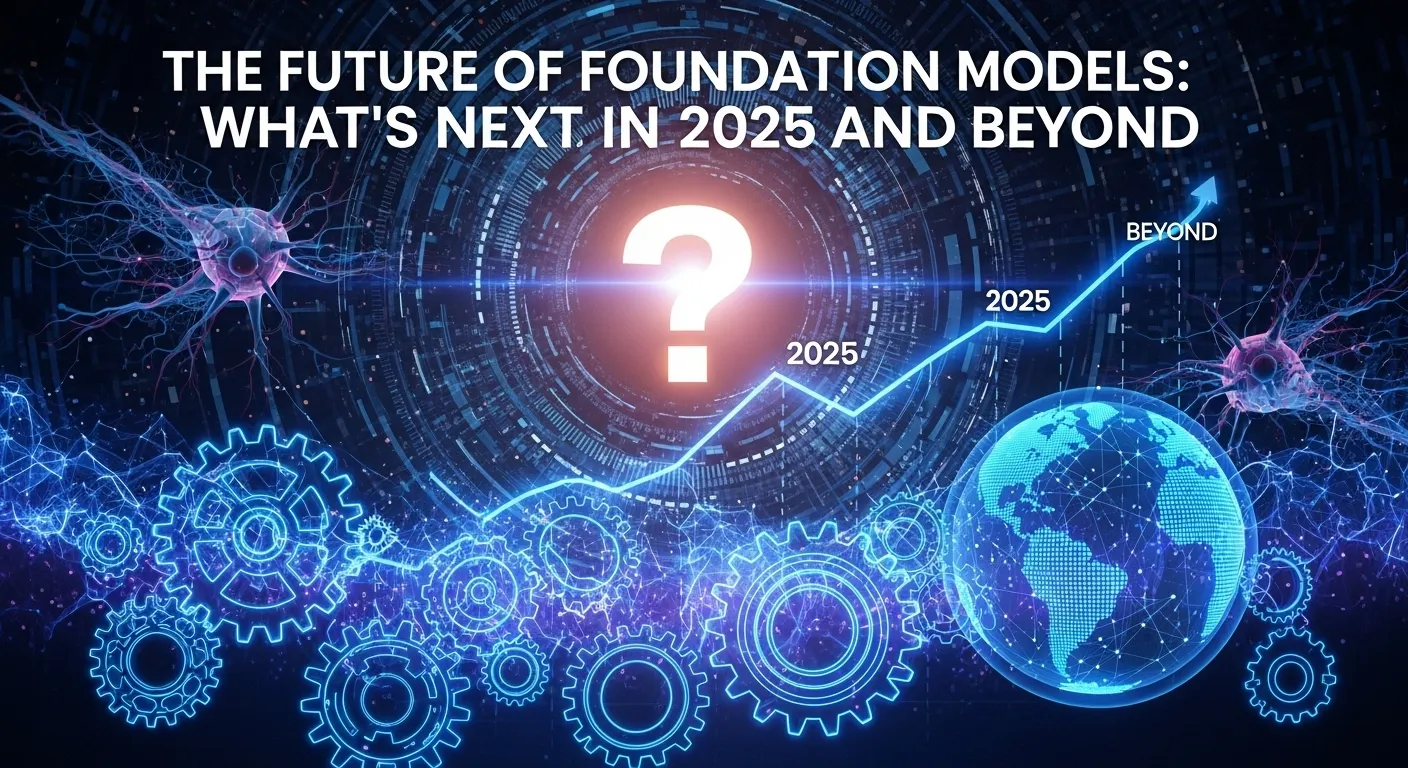Foundation models aren’t just getting smarter—they’re reshaping entire industries. Here’s what you need to know about their explosive evolution in 2025 and the years ahead.
What Is a Foundation Model?
Think of a foundation model as a digital Swiss Army knife—trained on enormous datasets, it can handle language, images, and even complex reasoning tasks. Unlike earlier AI that was built for one job, foundation models like GPT-4 or Llama 3 are versatile enough to power everything from chatbots to drug discovery.
How Foundation Models Work
Foundation models start by absorbing trillions of words, images, and data points. Through a process called pre-training, they learn patterns and relationships. Then, via fine-tuning, they’re tailored for specific tasks—like writing marketing copy or diagnosing medical images. In 2025, they’re becoming more efficient, requiring less data and energy to deliver smarter outputs.
Benefits & Use Cases
- Versatility — One model can power dozens of applications, saving time and resources.
- Speed — Accelerate research, content creation, and decision-making across sectors.
- Personalization — Deliver hyper-tailored experiences in education, healthcare, and retail.
- Use case — In legal tech, foundation models scan thousands of case files in seconds, highlighting relevant precedents.
Costs/Pricing
Access to foundation models varies. Open-source options (like Meta’s Llama) are free but require technical skill to deploy. Commercial APIs (OpenAI, Anthropic) operate on pay-per-use or subscription models—anywhere from $0.01 per query to thousands monthly for enterprise plans. In 2025, expect more tiered pricing as competition increases.
Local Insights (GEO)
In the U.S., foundation models are fueling a surge in regional AI startups, especially in tech hubs like Austin and Denver. Meanwhile, European companies are prioritizing GDPR-compliant, privacy-first models. Asia-Pacific markets are leveraging these tools for rapid e-commerce and fintech innovation.
Alternatives & Comparisons
- Closed-Source Models (e.g., GPT-4) — Pros: High performance, regular updates. Cons: Usage caps, less transparency.
- Open-Source Models (e.g., Llama 3) — Pros: Full control, customizable. Cons: Demands in-house expertise.
- Specialized AI Tools — Pros: Optimized for niche tasks. Cons: Lacks the broad utility of foundation models.
Step-by-Step Guide
- Identify your need — Pinpoint whether you need content generation, data analysis, or customer support.
- Choose a model — Weigh factors like cost, scalability, and data privacy.
- Fine-tune the model — Adapt it using your own data for better accuracy.
- Integrate and monitor — Deploy the model into your workflow and track its performance.
FAQs
Are foundation models safe to use?
Generally, yes—but risks like biased outputs or data leaks remain. Always review model providers’ safety protocols and use robust data governance.
How long does it take to implement a foundation model?
For off-the-shelf APIs, integration can take hours to days. Building a custom solution may require months of development and testing.
Will foundation models replace jobs?
They’re more likely to augment roles than replace them—handling repetitive tasks so humans can focus on strategy and creativity.
Bottom Line
Foundation models are evolving from powerful tools into essential partners for innovation. Staying informed and strategic will help you harness their potential—without the pitfalls. Got thoughts or questions? Share this article and join the conversation!

